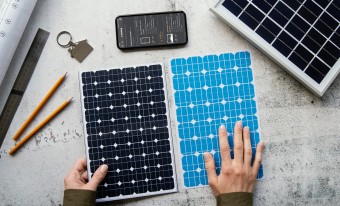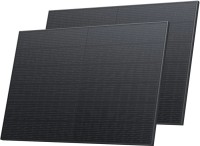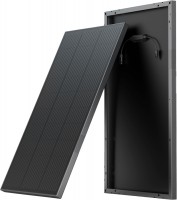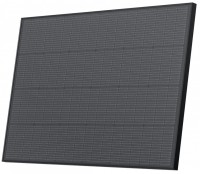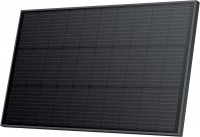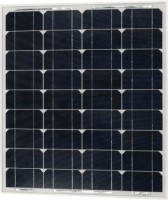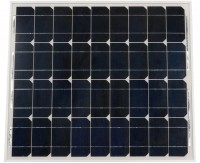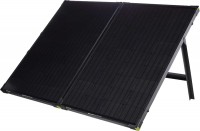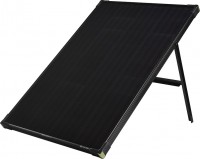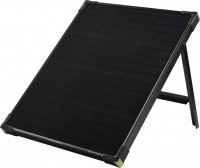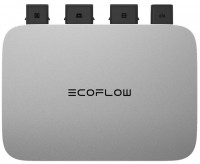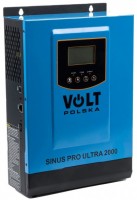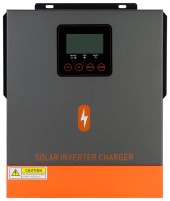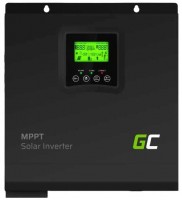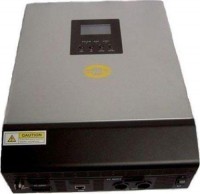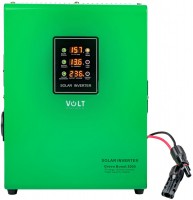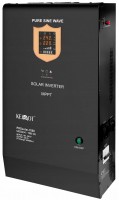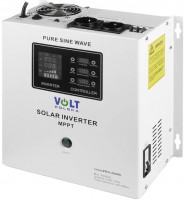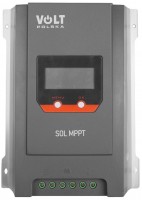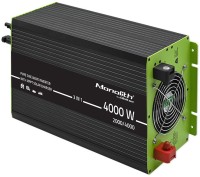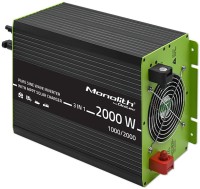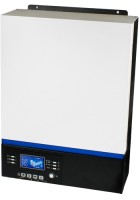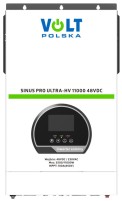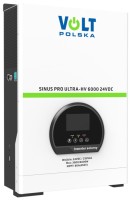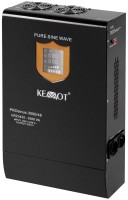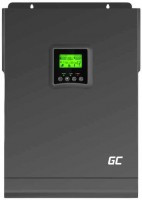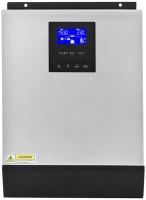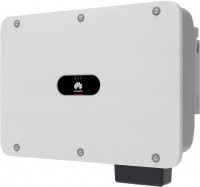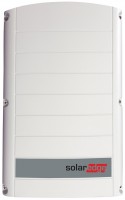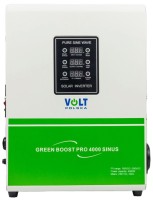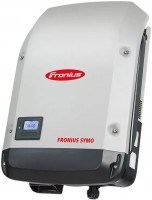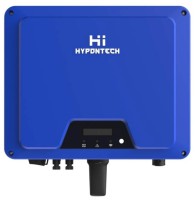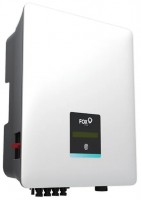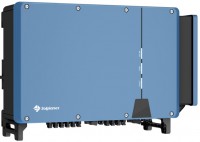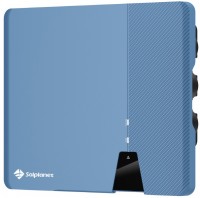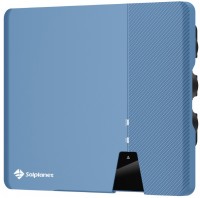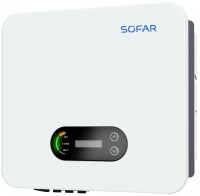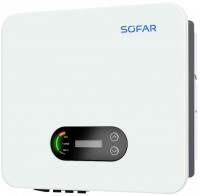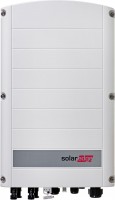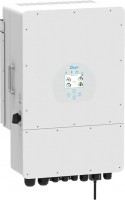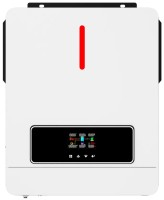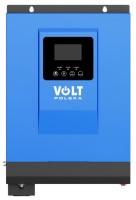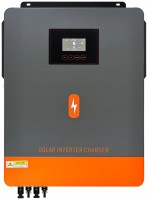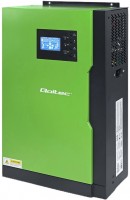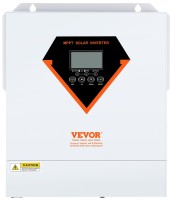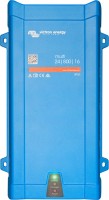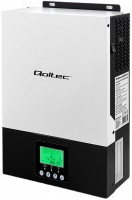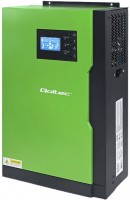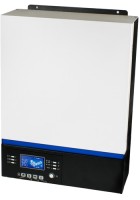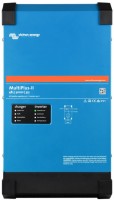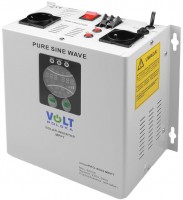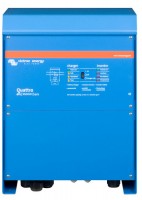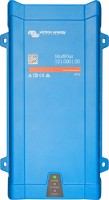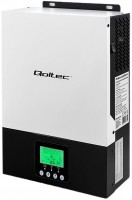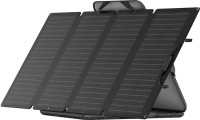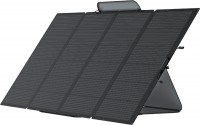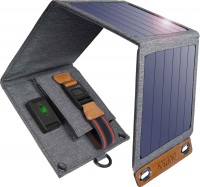How to assemble a solar power generation system for an apartment, townhouse, private house
Niezależnie testujemy rekomendowane przez nas produkty i technologie.

1. What do solar power systems consist of?
In the simplest terms, solar power plants consist of photovoltaic cells (solar panels), an inverter and batteries for storing the generated energy.
For the calculation example, we will assume that the housing is located in a conventional suburb of Kyiv. According to the sunlight intensity map, this corresponds to zone 4:

There are 1000 kWh of solar energy per square meter of horizontal land area in this zone. Since we are in the northern hemisphere, the panels must face south to achieve maximum efficiency. Depending on the plane of their inclination, additional correction factors may be introduced to recalculate the total solar energy flow.
On average, taking into account the correction factor and losses during the conversion of solar radiation, panels with a total capacity of 7 kW can generate about 7000–8000 kWh of electricity per year.
About 70% of all energy produced is generated during peak solar activity — approximately from 9 a.m. to 4 p.m. During these 7 hours, conventional photovoltaic cells with a total capacity of 1 kW will generate up to 7 kWh of electricity, and during the remaining daylight hours they will produce another 2–3 kWh. This is under ideal conditions. In non-summer months, when there is haze in the atmosphere, the light does not fall on the photovoltaic cells at a right angle, and cloudy weather significantly reduces the efficiency of solar panels. Also, the amount of solar energy per unit area strongly depends on the season. It looks like this:

In practice, the power of photovoltaic cells is determined based on the household's electricity needs and the rating of the inverter used. It can be roughly estimated using the data sheets of electrical appliances or specialized power tables (which household appliances consume how much). Close attention should be paid not only to the nominal, but also to the peak power - some electrical appliances such as refrigerators, air conditioners or borehole pumps consume much more amperes in the first few seconds after starting than when operating in normal mode. The inverter in the solar generation system must easily withstand such increased starting currents. Typically, the nominal and peak power are indicated in the characteristics of the converter. More information about " How to choose an inverter for solar panels " is given in the article of the same name.
The range of permissible PV voltages (panel array) also plays an important role. The inverter's operating range is between the starting and maximum voltage points. If a lower voltage is supplied to the converter input, it simply will not start, while a higher voltage may cause the inverter to quickly overheat and fail. The maximum permissible voltage in the circuit is calculated for the solar battery's limit temperature of -25 °C, since the voltage increases precisely when the panel temperature drops, and it is highly recommended not to exceed it. The minimum threshold is considered for the panel's limit temperature of +70 °C. Both obtained values determine the structure of the solar panels' connection in the string, their permissible number, and the connection method.
As for solar panels themselves, their power is usually set for STC conditions (standard test conditions reflecting the ideal operation of a solar panel), which are rarely achieved in practice. The vast majority of the time, photocells operate at 80-90% of the set power (and only during periods of maximum solar activity), and during operation they inevitably degrade, which also leads to a drop in power. As a rule, it is recommended to slightly "overload" the inverter on the DC side - within the range of up to 120%. For a conventional 7 kW model, the optimal value of the total power of solar panels will be in the range of up to 8.4 kW.
Photocells for deploying a solar generation array are often standardized in size and nominal power ratings. For example, polycrystalline panels have 260–290 W of power per 1.6 m² of area (can be averaged to 275 W). This figure is made up of a battery length of ≈160 cm and a width of about 100 cm.
To build a 7 kW system, the following number of panels is required:
7000W / 275W = 25.45 (≈ 26 panels)
Based on the obtained value, we can calculate the roof area that needs to be allocated for photocells:
1.6 m² * 26 pcs. = 41.6 m²
Nowadays, more efficient monocrystalline solar cells are used much more often. To assemble an array of solar panels, let's take as an example the conventional popular model Risen RSM40-8-400M with dimensions of 175.4x109.6 mm. The area of one such panel is about 1.9 m², but it already accounts for 400 W of power. Further calculations will be given specifically on this example.
7000W / 400W = 17.5 (≈ 18 panels)
1.9 m² * 18 pcs. = 34.2 m² (roof area for photocells)
All that remains is to acquire a suitable battery assembly. In fact, any batteries can be used in solar generation systems. But AGM, gel, lithium-ion and lithium-iron-phosphate (LiFePO4) batteries are best suited for these purposes. In this case, it is preferable to choose lithium types of batteries - they are not subject to the "memory effect", are not afraid of deep discharges, and can be charged quite quickly.
The minimum capacity of the battery for solar power plants is usually selected based on the values of electricity consumption at night - during the day, the solar generation system must cover the load needs and charge the batteries. In fact, it is better to take the battery capacity with a reserve - this will protect them from "dropping to zero" and will allow you to create a buffer in case of unforeseen situations (or to use the solar power plant as a reserve).
For example, 3 kWh of electricity is consumed per night for household needs. The inverter in the solar generation system is designed for an operating voltage of 48 V:
3000 Wh / 48 V = 62.5 Ah
The closest standard battery capacity is taken as 65 A*h. Therefore, when using standard 12-volt gel batteries, we will need four 65 A*h batteries connected in series in a 48 V system. Before complete discharge, they will be able to produce the required 3 kW*h of electricity. For gel and AGM batteries, it is advisable to lay in more solid reserves in capacity, while lithium types of batteries more reliably withstand the on top-mentioned deep discharges and do not need a large buffer.
2. Solar power station for an apartment

There is not much room to use solar panels in apartment buildings. Everything depends on the available area for placing photocells. Let's say we have a two-room apartment with a loggia facing the south. On its wall, we can carve out a maximum of 10 m² of area for installing solar panels. Let's remind you that for calculations, we use conventional Risen RSM40-8-400M photocells with dimensions of 175.4x109.6 mm. The area of one such panel is about 1.9 m² and it accounts for 400 W of power:
10 m² / 1.9 m² = 5.26 pcs. (round up to 5 pcs.)
5 pcs. * 400 W = 2000 W (2 kW)
From such a number of panels it will be possible to obtain up to 2 kW of generated power - on a bright sunny day and only if the angle of inclination of the photocells is correctly selected.
However, it makes sense to install an inverter in reserve - for 3 - 5 kW. The batteries in the assembly can be recharged not only from solar panels, but also from a charger. The total battery capacity for such a system should also be within approximately 5 kW.
- Assembly option "for all the money":
- 5 panels of ≈400 W will cost $100 per piece - $500 ;
- hybrid inverter Deye SUN-5K-SG03LP1-EU 5 kW / 48 V — ≈$1500 ;
- A 48-volt lithium iron phosphate battery from Deye with a capacity of 100 Ah will also cost around $1,500.
- Total comes out to ≈$3500.
- Low cost assembly option:
- 5 panels of ≈400 W will cost $100 per piece - $500 ;
- autonomous inverter Marsriva MR-SPF4000 TWIN V.4 4 kW / 24 V — ≈$600 ;
- two 12-volt gel or AGM batteries with a capacity of 200 Ah each will cost ≈$800(they are connected in series to obtain a voltage of 24 V).
- Total comes out to ≈$1900.
3. Solar power plant for a townhouse

In a townhouse, you can carve out much more space for solar panels than in an apartment. From the conditional total roof area of 80 m², you can allocate about half or a little less for photocells (taking into account windows, ledges, canopies, etc.) - we take about 35 m² on the southern side of the house.
35 m² / 1.9 m² = 18.4 pcs. (round up to 18 pcs.)
18 pcs. * 400 W = 7200 W (7.2 kW)
Provided that the photocells are operating at full capacity, the solar generation system will be able to produce up to 7.2 kW of power. Accordingly, it will require an inverter of 6 - 9 kW (depending on specific needs). It also makes sense to select a battery assembly of approximately 8 - 10 kW.
- Assembly option "for all the money":
- 18 panels of ≈400 W will cost $100 per unit - $1800 ;
- three-phase hybrid inverter Deye SUN-8K-SG04LP3-EU 8 kW / 48 V — ≈$2600 ;
- two 48-volt lithium-iron-phosphate Deye batteries with a capacity of 100 Ah each will cost ≈$3000(they are connected in parallel to increase the total capacity of the assembly).
- Total comes out to ≈$7400.
- Low cost assembly option:
- 18 panels of ≈400 W will cost $100 per unit - $1800 ;
- Huawei SUN2000-6KTL-M1 6 kW/48 V three-phase hybrid inverter — ≈$1350 ;
- A 48-volt lithium battery with a capacity of about 150 Ah will cost about $1750.
- The total comes to ≈$4900.
4. Solar power generation system for a private house

In a private house there is definitely room to turn around. After all, the roof of the house itself and adjacent buildings can be used to place solar panels. If the arrays of panels are supposed to be installed separately, an inverter with several MPPT controllers or two or three inverters will be needed.
Let's assume we have 120 m² of space available for solar cells:
120 m² / 1.9 m² = 63.15 pcs. (round up to 63 pcs.)
63 pcs. * 400 W = 25200 W (25.2 kW)
Theoretically, it is possible to deploy a solar panel array for all 25 kW of generated power. However, in practice, it is important to consider the useful area of the roof, the slope of the photocells, and their weight. And if the electricity is supposed to be sold to the grid at a "green tariff", the total assembly capacity should not exceed 30 kW.
A powerful inverter of 15-20 kW is not a cheap pleasure. You will also have to invest in the purchase of batteries to accumulate the generated electricity. We are considering them based on 12-15 kW.
- Assembly option "for all the money":
- 63 panels of ≈400 W will cost $100 per unit — $6300 ;
- hybrid inverter Deye SUN-15K-SG05LP3-EU-SM2 15 kW / 48 V — ≈$3500 ;
- two 48-volt lithium-iron-phosphate Deye batteries with a capacity of 120 Ah each will cost ≈$3500(they are connected in parallel to increase the total capacity of the assembly).
- The total comes to ≈$13,300.
- Low cost assembly option:
- 63 panels of ≈400 W will cost $100 per unit — $6300 ;
- Solplanet ASW12KH-T1 hybrid inverter 12 kW / 48 V - ≈$1900 ;
- two 48-volt lithium-iron-phosphate batteries with a capacity of 120 Ah each will cost ≈$3000(they are connected in parallel to increase the total capacity of the assembly).
- The total comes to ≈$11,200.
5. Conclusion
Note that the results obtained are approximate and recommendatory in nature, because solar panels can differ dramatically in size and, accordingly, area. Knowing their parameters, you can easily recalculate everything for specific conditions that suit you.
Artykuły, recenzje, przydatne porady
Wszystkie materiały